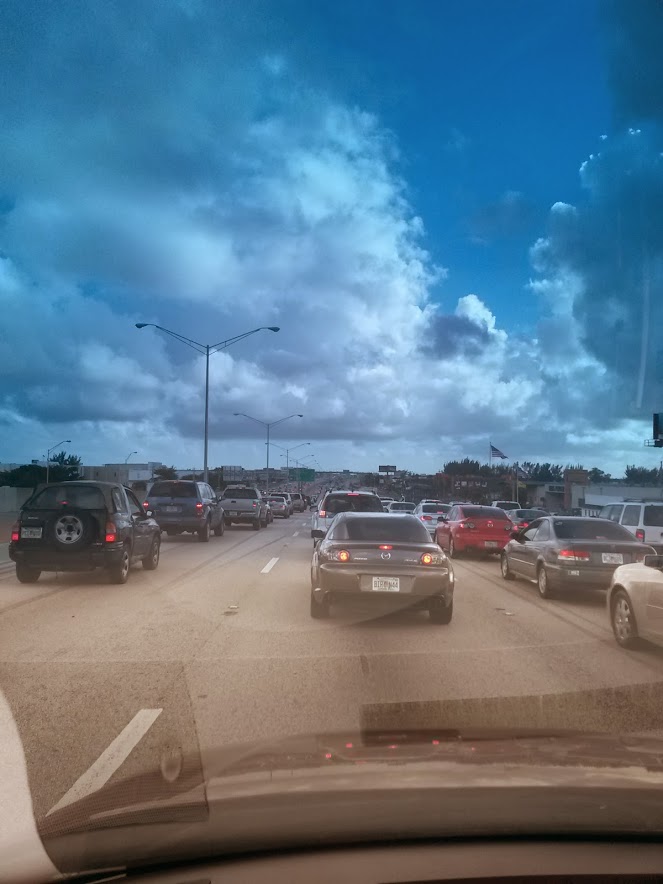by Rebekkah Mar
My parents’ worst nightmare came to life when I first showed interest in driving. That was no surprise with Miami’s reputation of back-to-back traffic, reckless driving from drunk or distracted drivers, and the rest of the obstacles that I would inevitably face on the road. As soon as I passed the driving test, my parents imposed driving restrictions on when and where I could drive. Some would say that my parents were over protective, but now I understand. South Florida has appeared repeatedly on several lists pertaining to the states with the worst reputation for driving. Based on car insurance websites such as Carinsurancecomparison.com, Florida, out of all of the states in America, was ranked the highest for careless drivers. It is a well-known fact that Florida’s roads are deemed as dangerous, congested, and driving is even a tedious experience for those who are stuck in traffic every morning and afternoon. However, as Florida’s already large population is increasing and could soon be the nation’s third most populous state, all of the associated driving problems will just cumulatively grow. So how do we rectify this situation? Are there plausible solutions?
There are a few options to minimize traffic and benefit the economy. Drivers could use the express lane, join carpool groups, and alternate routes. However, what if we focus on minimizing driving? By driving less, we could save time, money, and result in fewer car accidents. I was convinced that this is the optimal solution when I went to the “Miami Design Charrette,” an environmental leadership workshop series at The Light Box in Wynwood, Florida. Positive change in transportation is feasible as seen with the help of certain people and organizations pioneering new techniques and visionary concepts.
At the workshop, I had an opportunity to speak to Emily Glavey who works for Dover Kohl & Partners as a town planner. Her work also extends to “Seven50” which is a Southeast Florida Prosperity Plan addressing ways to impact Florida’s future, including topics like climate change, housing, transportation, and economic competiveness. “How can we improve traffic? First, when we think of the word traffic we automatically think of the automobile—which we relate to congestion. Relieving automobile congestion (this is not rocket science as they do it in cities all over the country and in the world), involves providing options—or alternative forms of transportation. Let’s be better in making the city and region more bikeable. Let’s make transit more available, more accessible, and more affordable. I love the metro, but adding transit accessibility doesn’t have to be as expensive as the addition of a new metro stop. The city can benefit from a bus system with more frequency.” Glavey added, “There’s a lot of money dedicated to transportation, but it’s mostly for automobiles. It should be focused on other forms of transit. I’m not saying lets take your car away, but I bet if you have the option to get on a train or bus because it’s faster and cheaper and you can do something else besides sitting in traffic [on US-1 or I-95], for example, you could be working, I bet you would choose to do that.” Glavey also connected how alternatives to driving can lead to a better environment and reduce carbon emissions. “So obviously our cars and our houses produce the most carbon; that means we need to adapt. We need to eliminate the amount of carbon that each of these produces. There are numerous ways. We can opt not to drive or we can drive less. Even if you don’t care about carbon or the environment, you are going to choose to do something because it’s more convenient. If there are more options, then it’s more convenient. All of these efforts are related to reducing levels of carbon which would mitigate sea level rise [in Florida]. It all connects, even if it’s hard to see how it all connects.” stated Glavey. She then concluded by saying to be informed by checking http://seven50report.org/ that addresses issues like transportation, climate change, and housing more in-depth and provides solutions to make Florida a more sustainable state.
With Glavey and the “Seven50” plan, there are other people who are trying to make a difference within the transit system like Freebee. Freebee is a free electric run transportation system owned and operated by Beefree Media. The cars serve as an advertisement technique as well as an alternative to driving. Besides tipping the generous drivers, Freebee has no fees and is substantially cheaper than driving. “They are electric transit cars,” stated Jared Jacobs, the company’s video storyteller. “They’re an electric glorified golf cart with lighting, music, and open windows so it’s a lot of fun. And there’s a driver that is taught about the brand and what the car is supporting. Like if it’s an issue such as climate change or a product. It’s all catered towards giving the rider an experience about the brand or an initiative…It is a solution to transportation. Because it is electric and supports six people, it gets rid of that short distance transit problem that we have here in Miami because we don’t have much transit in Miami. So what this is doing is allowing people from their apartment to take a Freebee to go to the grocery store or to a club or to see their friends without getting their car so their carbon emitting car stays parked in the garage.” So far Freebee is in Miami Beach and growing in Brickell with already twenty cars in the street. To find more information about the cars, go to www.ridefreebee.com. Jacob concluded the interview saying, “What makes Freebee unique is that the company has found a way to combine sustainable environmental solutions with sustainable free market solutions.”
These ideas and solutions are not new concepts. Residents of Downtown Kendall and South Miami can go days without driving and only use their cars when they desperately needed. “Two weeks ago, I flew to New York from Fort Lauderdale and I live in South Miami. I got on the metro. I took the metro to the tri rail, I took the tri rail to the stop in Fort Lauderdale and then took a shuttle to the airport. I didn’t have to drive in rush hour traffic at that time which was faster and all the costs associated with driving my car were eliminated. It cost me four dollars,” claimed Glavey. At the end, this is a personal choice. But by making a choice regarding driving less or taking different ways to work, will not only impact a person individually but can also have a greater and bigger affect on how we live in Florida.









Follow Us!